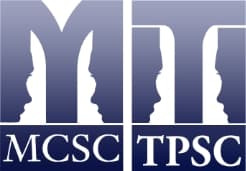Botox and Headaches
I am often asked questions regarding the use of Botox in treatment of headache. There are a number of studies that have been done in varying types of headache sufferers. Some have looked at Botox to treat migraine, and others have looked at the use of Botox in chronic daily headaches. There has been variability in the results of these trials, and it is true that some have not shown Botox to confer a measurable benefit greater than that of placebo in a number of parameters, including frequency and severity of headahce. In contrast, some studies have shown substantial benefit , as for example a study done in 2003 did. In 271 adult migraine sufferers, 80% had some improvement in their migraine pattern. Recently, in late 2008, Allergan, the makers of Botox, announced positive results in their large study on chronic migraine patients , who were defined as individuals with headaches 15 days a month. In that study an increase in headache free days , and a decrease in headache episodes was reported.
Botox is thought to act to prevent or reduce headaches by blocking the release or action of certain neuropeptides thought to be important in pain transmission, and not due to it’s muscle relaxing action.
Thus far , because of conflicting evidence, Botox is not officially approved for treatment of headaches by the FDA in the united States, nor by Health Canada. However, many believe the earlier inconclusive studies failed to show consistent benefit due to differing methods of selecting patients and due to different methods of administration and dosing of the drug. Allergan is submitting their recent study results to the FDA in the US, and it is possible official approval for this indication may be given some time in 2009 there.
Despite the lack of official Health Canada approval, many headache clinics and migraine doctors here have been using Botox to treat headache for some time, and this is perfectly legal. Ideally patients should be informed before treatment that it is an “off label” use of the medication. Many migraine specialists and patients prefer Botox to other oral medications because of the very low incidence of systemic side effects.
Most neurologists who use Botox for migraine use a protocol that involves treatment with 1 vial (100 units) of Botox injected in the forehead , over the scalp, the occipital region and sometimes into the back of the neck or shoulder area in a “follow the pain” approach. Injections are usually repeated every 3 months if benefit is reported, and is discontinued after 2 treatments if there is no improvement.
Many, but not all, insurers will cover the cost of Botox when used to treat headache. Typically insurers do not cover the injecting fee, which is usually around $200.


Leave a Reply